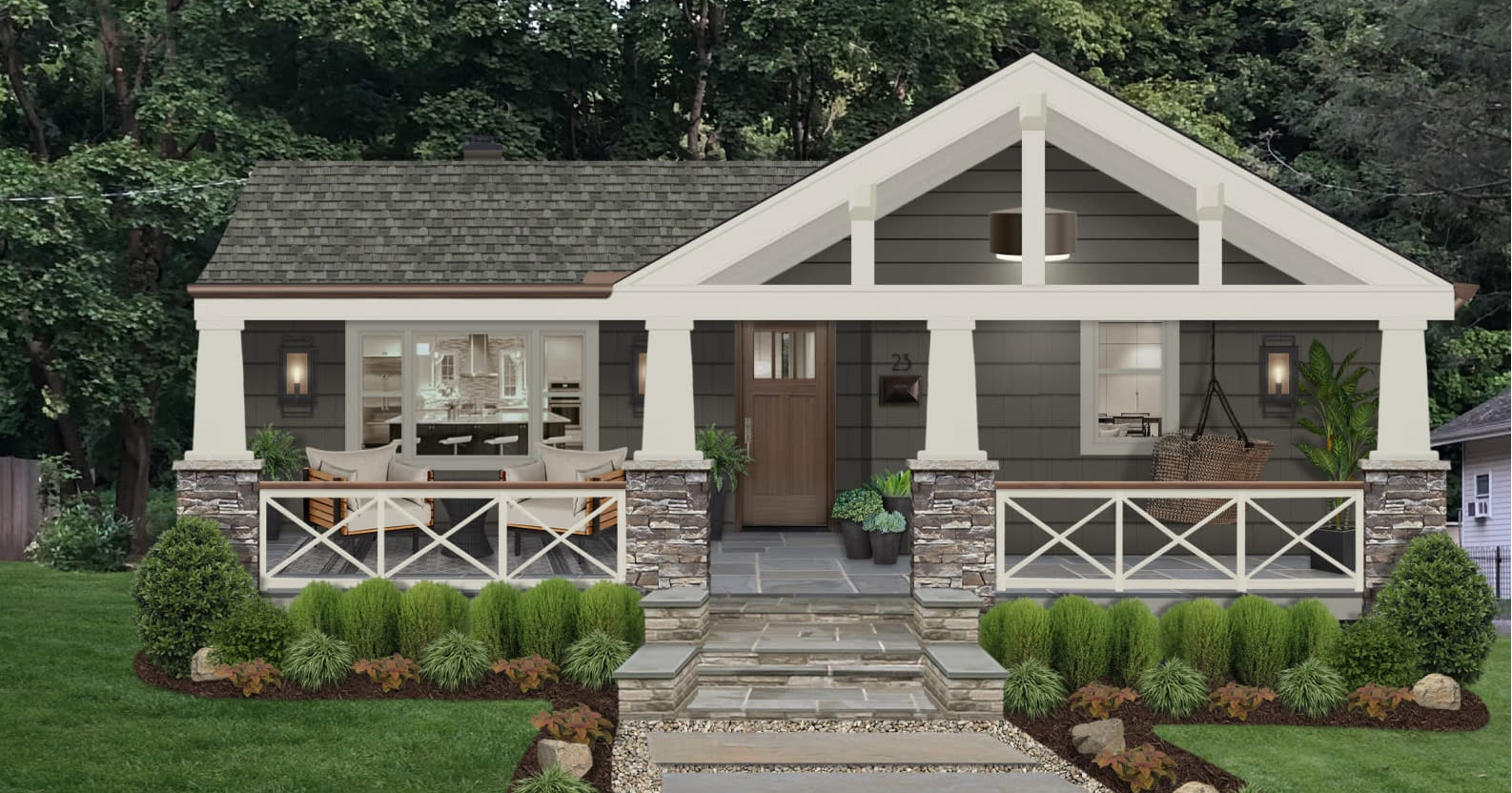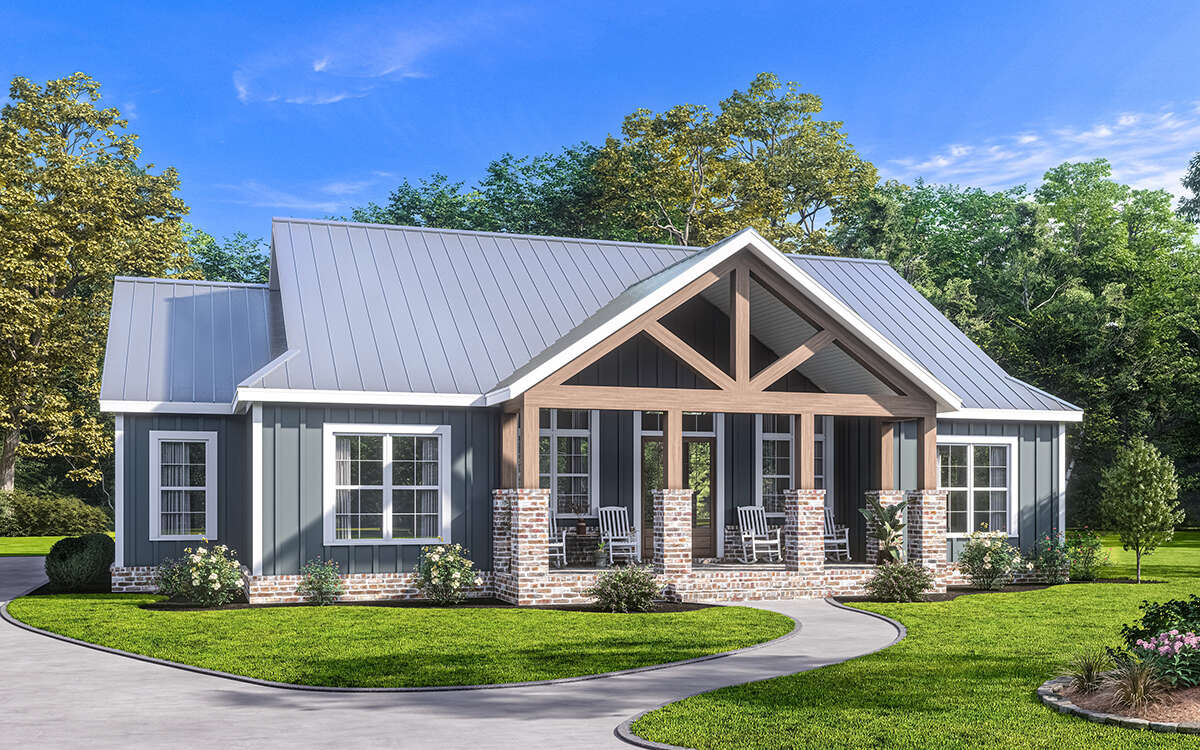Traditional Elements That Highlight a craftsman style house
Wiki Article
The Duty of Arts & & Crafts Architects in Elevating Architectural Providers in Residential Style
Arts and Crafts architects substantially influence residential layout via their dedication to craftsmanship and sustainability. They prioritize handmade details and natural products, which enhance both aesthetics and community identity. By entailing clients in the design process, these architects produce distinct living rooms that reverberate with individual preferences. This method questions concerning the future trajectory of household architecture and its prospective influence on area dynamics. craftsman style house. What lies ahead for this classic design philosophy?
The Principles of Arts and Crafts Architecture
The significance of Arts and Crafts architecture exists in its dedication to workmanship and simplicity. This building activity emerged in the late 19th century as a reaction to industrialization, highlighting the value of handcrafted details and natural materials. The principles of Arts and Crafts architecture prioritize functionality and consistency with the atmosphere. Structures commonly include low-pitched roofings, vast eaves, and revealed rafters, advertising a sense of unity with nature.Artisans played a significant role in this design, typically incorporating ornamental components like stained glass, floor tiles, and woodwork, which reflect neighborhood workmanship. The shade combination has a tendency to be earthy and subdued, enabling structures to blend effortlessly right into their surroundings. Additionally, the design motivates open flooring strategies and common rooms, promoting a sense of togetherness. Generally, the principles of Arts and Crafts architecture commemorate the appeal of simpleness and the importance of human link to both nature and community.

Sustainable Practices in Residential Layout
While the need for environmentally liable living continues to expand, lasting methods in property design have actually acquired significant grip amongst architects and home owners alike. Architects are increasingly incorporating energy-efficient technologies and lasting products into their styles, intending to lower carbon impacts and improve power preservation. Methods such as easy solar layout, green roofs, and rainwater harvesting systems are ending up being common elements of contemporary property architecture.Additionally, the selection of in your area sourced materials reduces transportation emissions and sustains local economic situations. Focus on natural light and ventilation not just enhances indoor air high quality yet additionally decreases dependence on synthetic lighting and climate control systems. These sustainable methods show a commitment to preserving the environment while offering house owners with comfortable, reliable space. As understanding of environmental issues grows, the combination of sustainability in residential design is poised to come to be a specifying feature of modern architecture, guided by the concepts established by Arts and Crafts architects.
Personalization and Personalization in Home Style
Customization and personalization in home design have become vital patterns in feedback to the expanding wish for unique living atmospheres that show individual tastes and lifestyles. House owners significantly look for to tailor rooms that reverberate with their individual identifications, resulting in a much more purposeful link with their space. craftsman style house. This movement urges architects to engage clients in the design process, promoting cooperation click this site that guarantees the last end result personifies the home owner's visionAspects such as bespoke layouts, custom-made products, and customized coatings enable a varied series of expressions in domestic style. Arts and Crafts architects play a critical role in this evolution, emphasizing craftsmanship and quality. Their emphasis on incorporating creative components with functionality warranties that each home is not just visually pleasing yet also uniquely suited to the occupants' demands. This focus on customization enhances the general property experience, developing areas that are both personal and enduring.
The Influence of Arts and Crafts Architects on Community Visual Appeals
As areas advance, the influence of Arts and Crafts architects greatly forms their aesthetic landscape. By stressing handmade details, all-natural products, and standard construction techniques, these architects develop homes that resonate with their environments. Their designs commonly incorporate local plants, appearances, and shades, fostering a sense of consistency in between built atmospheres and nature.The Arts and Crafts activity advertises area identification through architectural connection. By motivating property owners to adopt comparable layout principles, communities create a cohesive character that improves visual appeal. This building uniformity not only enriches the visual experience but also instills a sense of pride amongst locals.
Moreover, the focus on sustainability and craftsmanship in Arts and Crafts architecture lines up with modern values, making these styles appropriate in modern settings. Eventually, Arts and Crafts architects contribute significantly to the total elegance and social stability read what he said of areas, leaving an enduring effect on their visual tradition.

Future Fads in Arts and Crafts Architecture
With a boosting emphasis on sustainability and personalization, future fads in Arts and Crafts architecture are poised to mix conventional workmanship with contemporary technology - craftsman style house. Architects are most likely to prioritize environmentally friendly materials, making use of recovered timber and all-natural stone to enhance the sustainability of household styles. The assimilation of wise home technology will become typical, permitting customized living experiences without jeopardizing aesthetic integrityThe rebirth of artisanal strategies will certainly promote a restored recognition for handcrafted aspects, such as bespoke cabinetry and personalized ceramic tile job. Future styles might also mirror an emphasis on community-oriented spaces, motivating interaction and connection amongst locals. Exterior living areas will certainly gain importance, seamlessly integrating nature right into the home environment. As Arts and Crafts architecture progresses, it will proceed to honor its origins while adjusting to contemporary requirements, developing harmonious spaces that show specific values and way of lives.
Regularly Asked Questions
What Influenced the Arts and Crafts Activity in Architecture?
The Arts and Crafts motion in architecture was influenced by a response against industrialization, highlighting handmade top quality, natural materials, and a return to standard workmanship, intending to create harmonious, practical rooms that commemorated artistry and individuality.Exactly how Do Arts and Crafts Architects Collaborate With Clients?
Arts and crafts architects work together with customers via open discussion, focusing on individual demands and looks. They stress workmanship and sustainability, fostering a collaboration that incorporates the customer's vision with the engineer's proficiency in design and materials.What Materials Are Commonly Used in Arts and Crafts Homes?
Common products in Arts and Crafts homes consist of all-natural wood, rock, and brick, emphasizing workmanship and natural aesthetic appeals. These aspects develop a cozy, inviting atmosphere, reflecting the movement's dedication to top quality and simpleness in style.Exactly how Do Arts and Crafts Designs Enhance Indoor Living Rooms?
Arts and Crafts layouts improve indoor space see this site by advertising all-natural light, open layout, and handcrafted information. These elements cultivate a cozy, inviting atmosphere, urging a connection between homeowners and their atmospheres through thoughtful, useful appearances.What Are Some Famous Instances of Arts and Crafts Architecture?
Famous examples of Arts and Crafts architecture consist of the Gamble Residence, Greene and Greene's masterpiece in The golden state, and the Robie Residence by Frank Lloyd Wright. These frameworks showcase handcrafted details and consistency with nature, defining the activity's significance.Report this wiki page